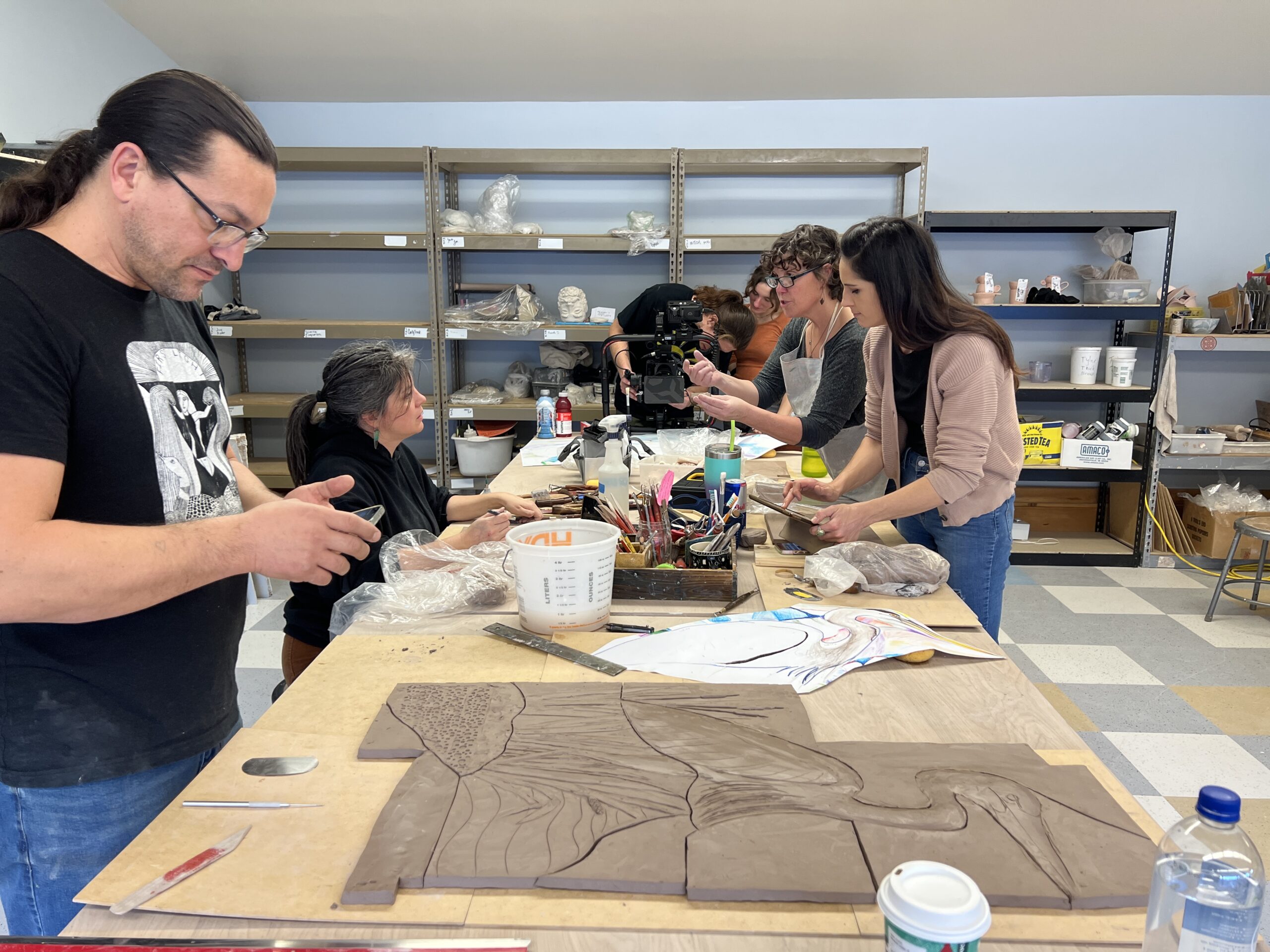
STACYVILLE, Maine — Visitors to the Katahdin Woods and Waters National Monument in northern Penobscot County this summer will see more than just the natural beauty of the attraction.
The nearly completed National Park Service visitor center at the summit of Lookout Mountain shares the Wabanaki story of the land and people through intricate artisan details like hand-created clay tiles.
Elliotsville Foundation, the National Park Service, and representatives of the independent Native Nations that constitute the Wabanaki Confederacy — Houlton Band of Maliseet Indians, Mi’kmaq Nation, Passamaquoddy Tribe at Motahkomikuk and Sipayik, and Penobscot Nation — have all worked collaboratively on the project, said Brian Hinrichs, executive director of Friends of Katahdin Woods & Waters.
“Wabanaki perspectives are deeply reflected in the materials and storytelling that occurs within the building and the design itself,” he said.
The Tekαkαpimək Contact Station, as the center is called, is nestled within the national monument’s 87,000 protected acres. It is scheduled to open in August and will invite visitors to engage with the history of the Wabanaki people who have lived on the land continuously for thousands of years, Hinrichs said.
Tekαkαpimək translates from the Penobscot language to “as far as one can see” and is pronounced de gah-gah bee mook.
The National Park Service calls visitor centers within the national monument contact stations.

To date, nearly $30 million has been raised from approximately 200 donors toward an overall campaign goal of $35 million. The funds will provide $31 million for Tekαkαpimək Contact Station, $2.7 million for park priority projects to protect natural resources and enhance visitor experience, and $1 million for future Wabanaki directed projects.
The funds also support a new 3.6-mile access road to the site, an eastern lookout, a network of accessible paths and access routes, and state of the art off-grid sustainability features.
“The monument is still a hidden gem within the National Park System. Amidst Its very rugged beautiful terrain the contact station is about creating an accessible welcome point for visitors, the community and for anyone who is curious about this landscape,” Hinrichs said.
Many of the pathways into the monument are on logging roads. But there’s a misperception that it’s overly challenging terrain, Hinrichs said.
“That’s where this new building comes into play as a more accessible point for all visitors to experience the land,” he said.
As Hinrichs describes it, the monument protects the area for visitors to experience in all four seasons. There are 17 miles of a scenic loop road that typically opens in late May. Within the monument there are 15 campsites and lean-tos including three that have drive-up access, 30 miles of hiking on the International Appalachian Trail, a trail network that connects Maine to Canada and then goes overseas as well. Three rivers offer paddling and fishing. In the winter there are miles of cross country skiing and snowshoeing trails.
Katahdin Woods and Waters National Monument is located within the present and traditional homeland of the Penobscot Nation.

The land and waters are inextricably linked with Penobscot culture, ceremonies, oral traditions, language, history, and indigenous stewardship, according to Hinrichs. And it is culturally significant to the Wabanaki people – Maliseet, Mi’kmaq, Passamaquoddy, and Penobscot Nations – where connecting watersheds provide important travel routes.
In 2016 President Barack Obama designated Katahdin Woods and Waters a national monument. It is made up of 13 parcels donated by Elliotsville Plantation Inc. and Roxanne Quimby, owner of Burt’s Bees.
The contact station is being built and paid for through private funds and will be donated to the National Park Service which will operate it going forward, according to Hinrichs.
Since the Tekαkαpimək Contact Station site is currently an active construction zone it is closed to visitors at this time. The public will be welcomed in mid-August 2024.







